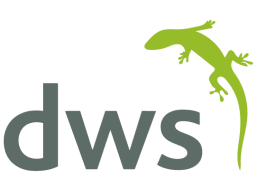by Barry Burke
Earlier this year, Gartner published a report entitled “What Oracle ERP customers need to know about Oracle Cloud Applications”. It makes for an interesting read. If you have half an hour to spare, you can read the original article here.
Prompted by ERP customers’ concern over the long-term return on their investment in on-premises solutions, and uncertainty as to the maturity of cloud alternatives, the report seeks to put cloud migration (specifically in regard to Oracle ERP) into some context.
The first thing to point out is that the doomsayers who are predicting the imminent demise of JD Edwards as an on-premises solution are being more than a little disingenuous. The announcement in 2017 that 9.2 will be the last major release of JDE EnterpriseOne is not an indicator that the product is going end-of-life. It signals a logical move away from a major upgrade every 3 – 5 years in favour of a continuous delivery model.
If nothing else, it doesn’t make financial sense for Oracle to discontinue a perpetual license and maintenance model that accounts for over two-thirds of its software licensing revenues in favour of a SaaS subscription-based model. Whilst it’s probably true to say that “cloud is the future”, the roadmap for change will differ considerably among larger organisations.
In its assessment of the cloud migration path, Gartner predicts the majority of Oracle customers will begin their journey to the cloud in the next five years. However, it recognises that large manufacturing businesses are unlikely to move their entire footprint to the cloud anytime soon.
The report encourages CIOs to familiarise themselves with the history of Oracle Cloud Applications, going back to the announcement of Project Fusion in 2005. In the intervening years, it’s claimed than Oracle has invested over $7 billion on developing its cloud applications.
History aside, the report has some useful advice around the evaluation of on-premises roadmaps versus cloud alternatives. For JDE EnterpriseOne, extended support is available through to at least 2030, with sustaining support listed as “indefinite” (the same term used to describe cloud applications).
Plus, the move to continuous delivery, the recent development of enhanced mobility functionality, the IoT Orchestrator and a new UI demonstrates Oracle’s continued commitment to JDE EnterpriseOne.
Everyone’s journey to the cloud will differ, both in terms of timeline and complexity. The Gartner report includes a summary of the options available for existing on-premises ERP customers and makes recommendations for a strategy, based on your situation and commitment to change.
In Conclusion
The report advocates for what it calls a “post-modern” approach; recognizing that customers are not looking to migrate to the cloud overnight. It cautions that the immature nature of the market means finding good third-party support for cloud applications may be challenging.
Interestingly, it stops short of promoting cloud as the inevitable choice; suggesting any decision should be based solely on the value proposition. For most, any cloud migration will be a phased approach, placing ERP infrastructure in a hybrid state. Ironically, this may remain the end state of the solution, as organizations settle on the balance of on-premises and cloud, security and scalability, resilience and control that best suits their long-term objectives.
In response to this evolving landscape, DWS has developed a portfolio of products and services that are deliberately platform-agnostic and apply equally to on-premise, hybrid or cloud deployment models.
If you’d like to talk to one of our JDE consultants about cloud migration and support, contact us now to discuss your requirements




